Following Jcy Ho’s recent popular article on overcoming downhill fear, Henrik Leth Jorgensen provides more tips for those hoping to improve downhill running technique
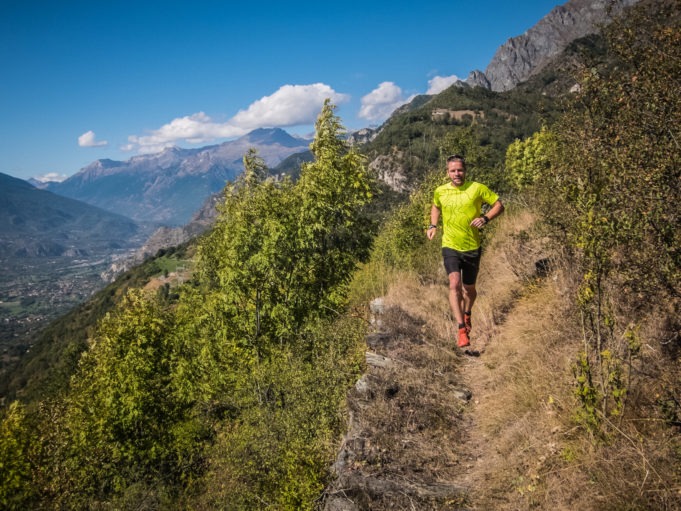

Non-technical downhill intervals
You might not have the best possibilities for technical downhill running in your neighbourhood, but actually you can also benefit from running on non-technical downhill sections.
To do so, use downhill intervals; these will increase your confidence running downhill at high speed and will deliver a good beating to your legs which will help condition them for race day. Build up to this slowly so as not to cause injury – start with a few, short speed intervals and gradually increase distance and speed over time.
These interval sessions can also improve your mental game as running downhill also requires some ‘mind over matter’ and running through the pain cave.
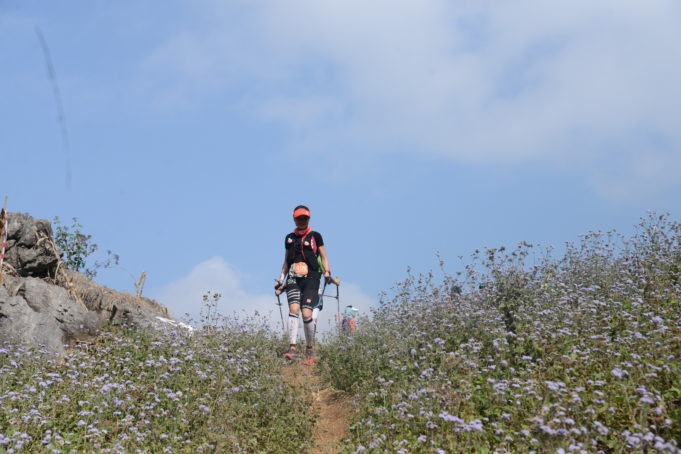

High cadence – High confidence
The higher the cadence, the shorter time each foot has on the ground, meaning less time to slide on your shoes, less time to twist your ankle and less time your knee should stabilize your entire movement.
To learn to have higher cadence, you can do ladder-training. Put your foot between each step on the ladder (the ladder should be lying on the ground). Run faster and faster. You do not actually need a ladder to do this – you can just put small any obstacles on the ground with a little more than a shoe’s distance between each.
Later, when running on technical terrain, you will benefit from being able to change your cadence according to the surface. Most often, higher cadence will give you more confidence.
Your torso should show little movement, but your legs should move fast – hit the spot that is necessary at that specific moment. That foot strike may not be underneath your body, so move your feet and legs according to the surface and let your upper body move forward in a straight line.
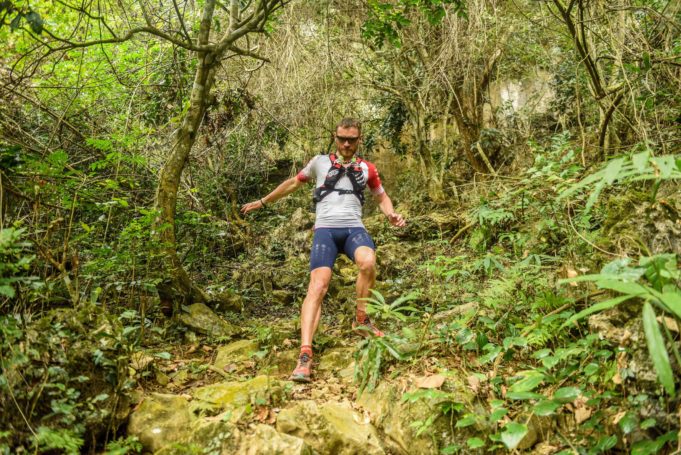

Technical flats – choose your obstacles
One little twist to the exercise mentioned in Jcy’s article about running on technical flats is to run several times on one kind of obstacle, or between each obstacle of that kind. If you are in a forest trail with plenty of roots, try running a couple of times where you may only step on top of the roots.
Afterwards run a couple of times where you may only step between the roots, and finally run some times where you may step wherever you like to, but as fast as you can. In that way you build up confidence that your feet and legs will handle whatever you throw at them.
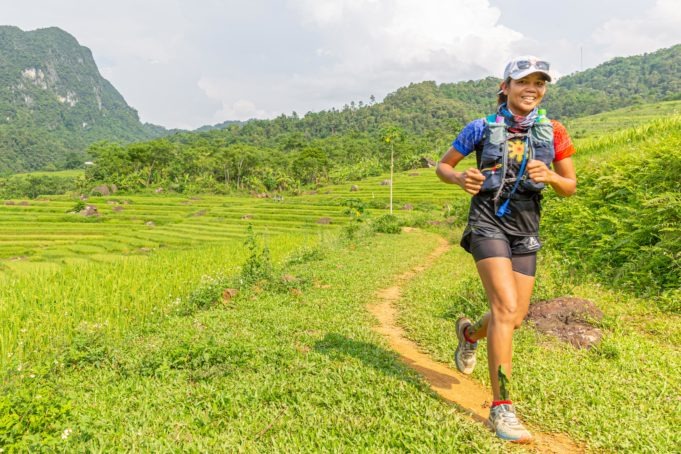

Build strong knees
A lot of the aforementioned tips are about confidence. But running fast downhill is both about trusting yourself plus having good technique and strength.
A few strength exercises for your knee will positively impact your ability to run downhill. If the shoes slide underneath you, a strong and stable knee will allow you to transfer the weight to the other leg and you can continue to run instead of falling.
Continuously running downhill several times during a race will tire your legs. Strong knees will postpone the shaky feeling when running downhill.
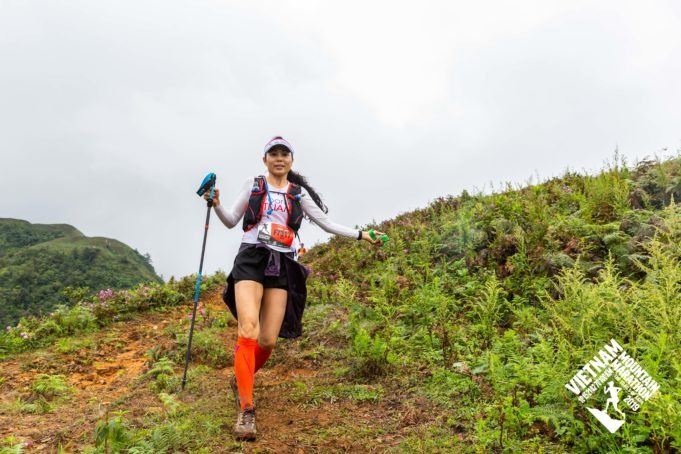

Team up and play around
If you have a running partner, or a running group, you can easily help each other to become better runners. Different kinds of game of tag done in difficult terrain will build your technique fast, because you forget about the surface when you focus on catching each other.
Another exercise is to run behind your partner. Run so close to your running buddy that you cannot see the ground, but only your partners back/shoulders. Run different kinds of terrain in this way and you will soon experience that your feet and legs are able to handle everything, even with disabled vision.
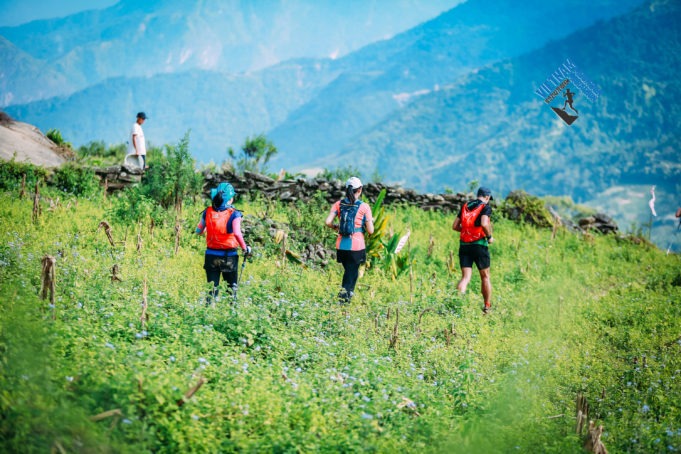

Trust the surface – test your shoes
Often runners are not confident about how much grip their shoes have; indeed, sometimes their shoes do not provide enough grip!
As a general rule, the larger the distance between the treads, the more traction the sole of the shoe provides.
If the distance gets too small, dirt/mud will get stuck between and create an even surface underneath the shoe. This will make the shoe slide.
If running in muddy conditions, you can do a ‘finger test’ on your shoe: if you are able to squeeze a finger between the treads, the shoe will likely provide plenty of grip.
Another confidence building test is to stand still on a surface that is not flat. How steep a surface can you stand upon before the shoes begin to slide?
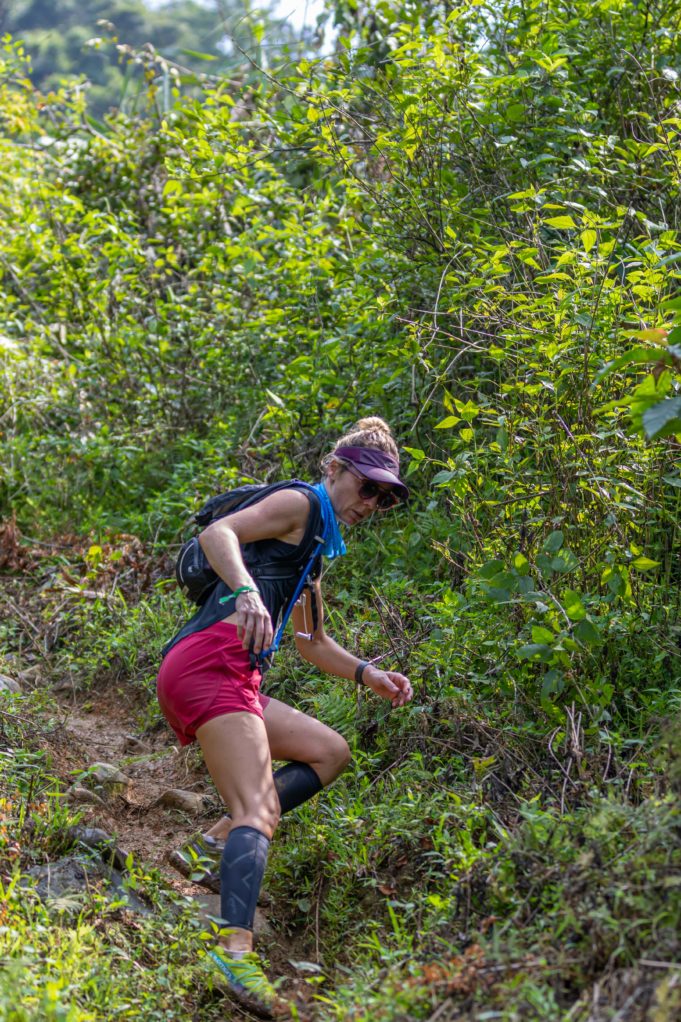

Most important
Keep challenging yourself, but incrementally – build everything up in manageable steps to avoid injury and damaging your confidence.
Want to learn more about downhill? Read Jcy Ho’s article HERE
For more tips to improve your running techniques, read our training section HERE



